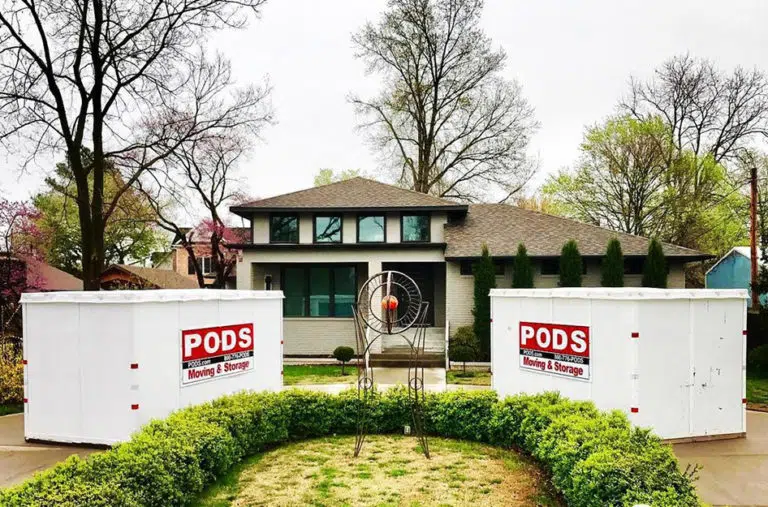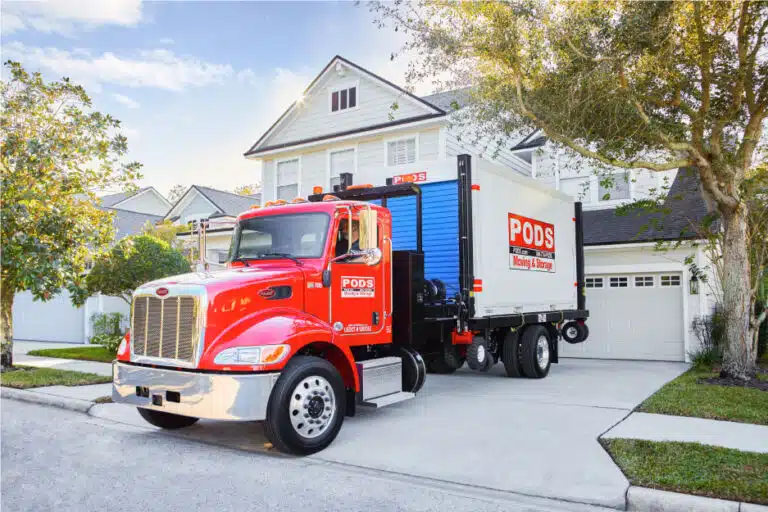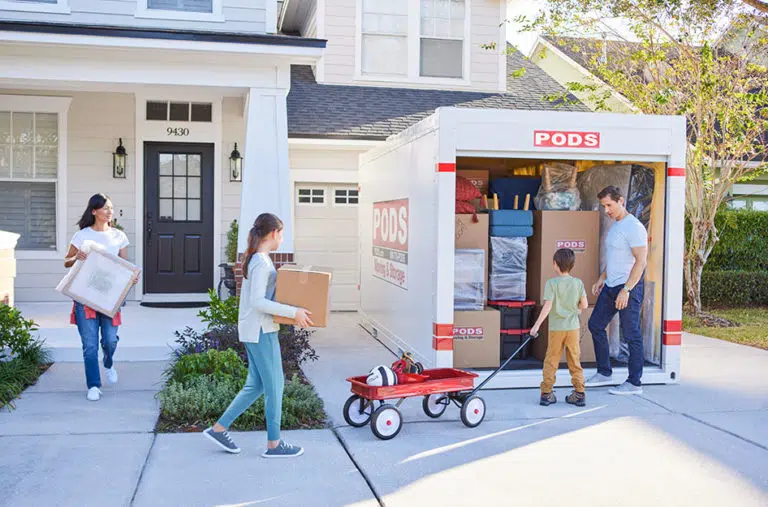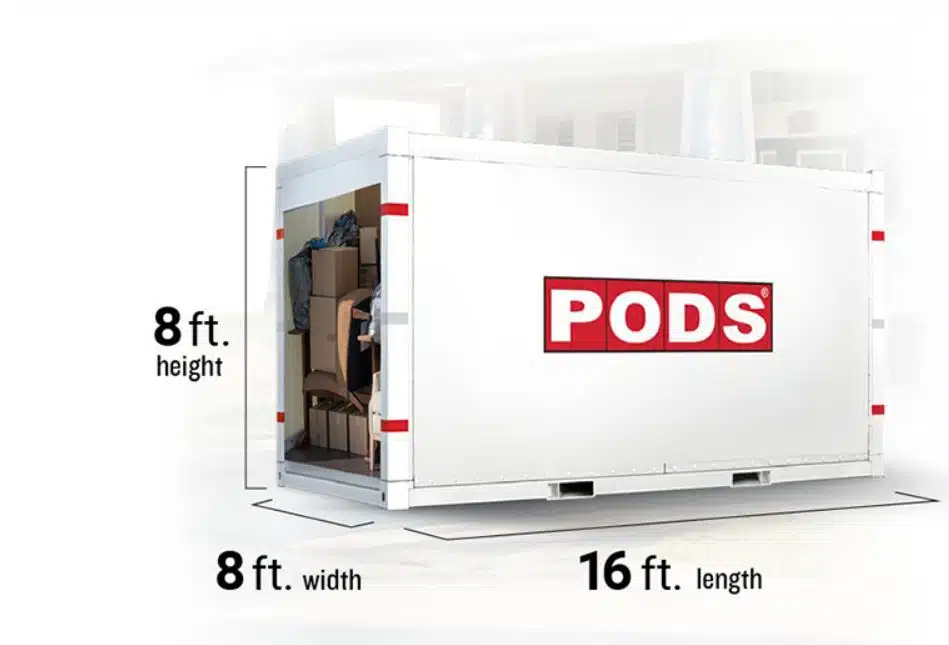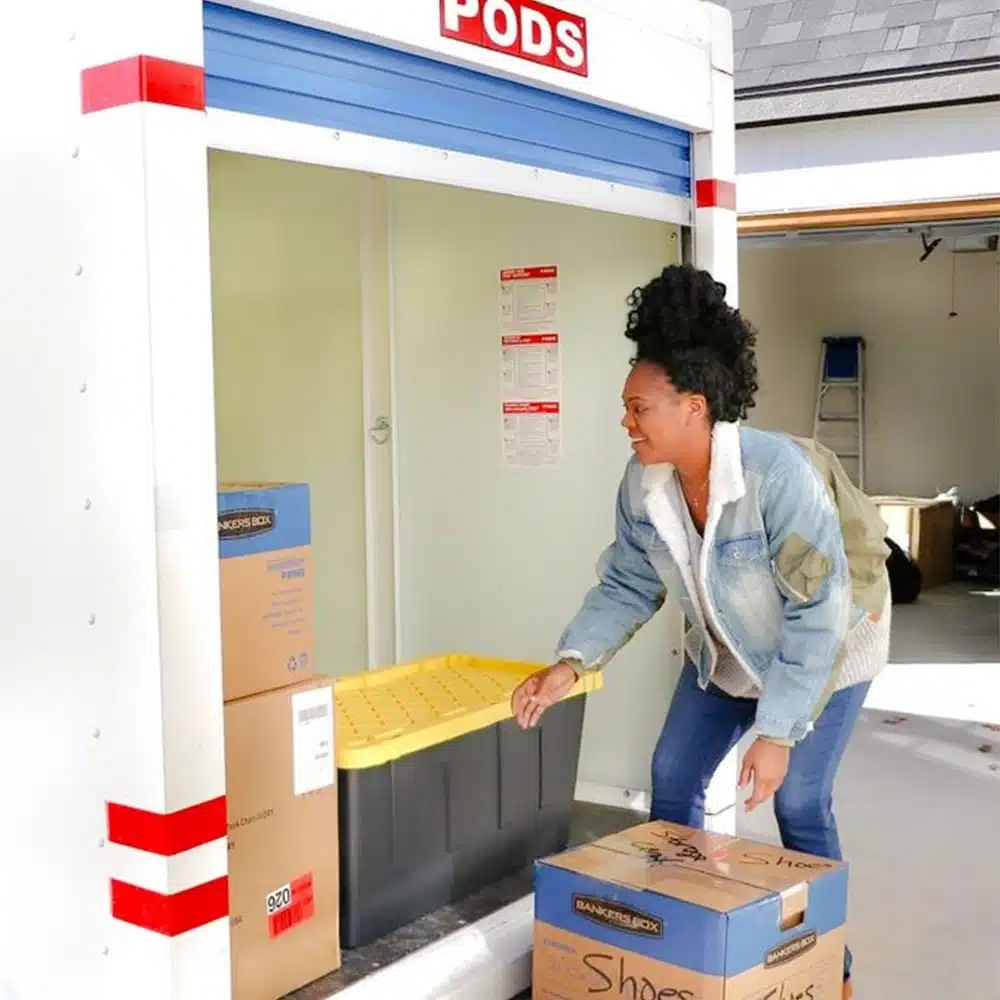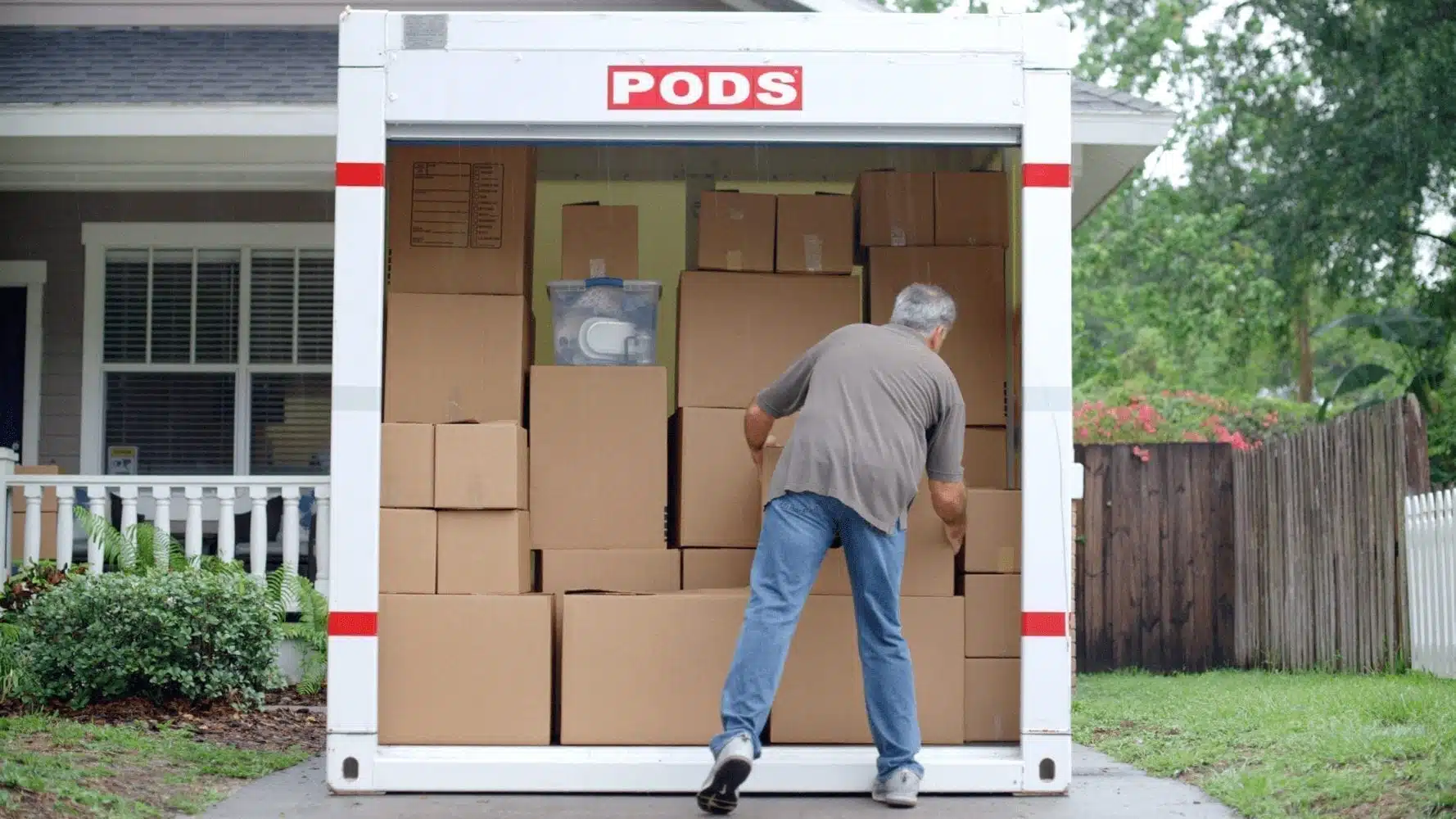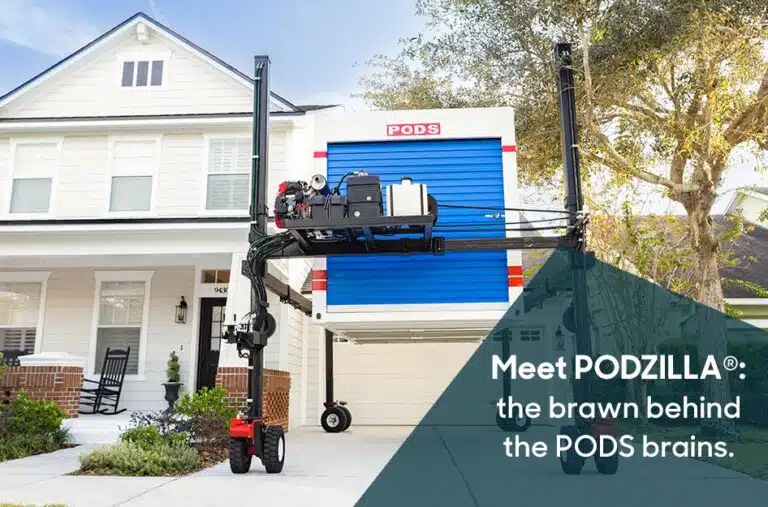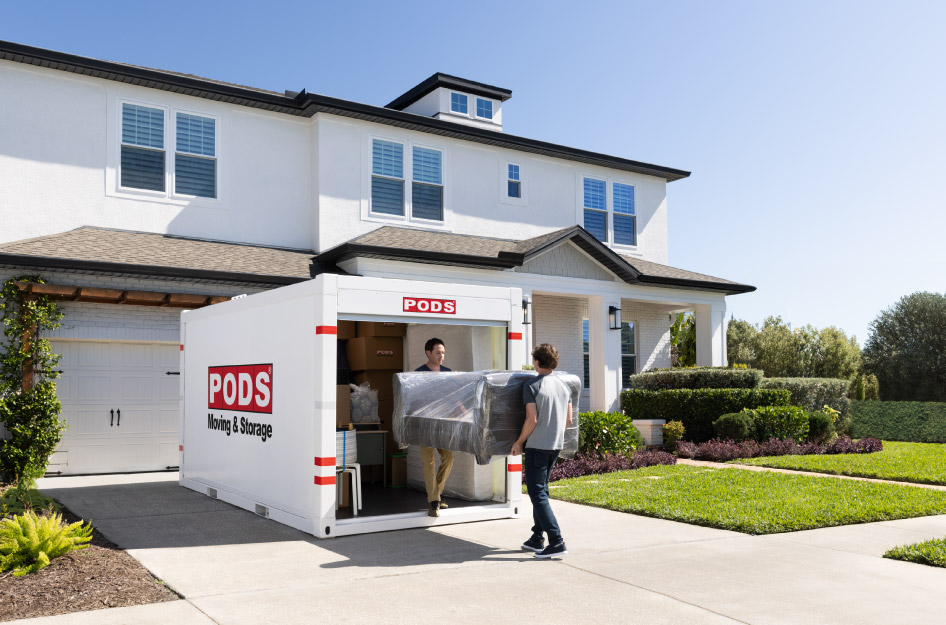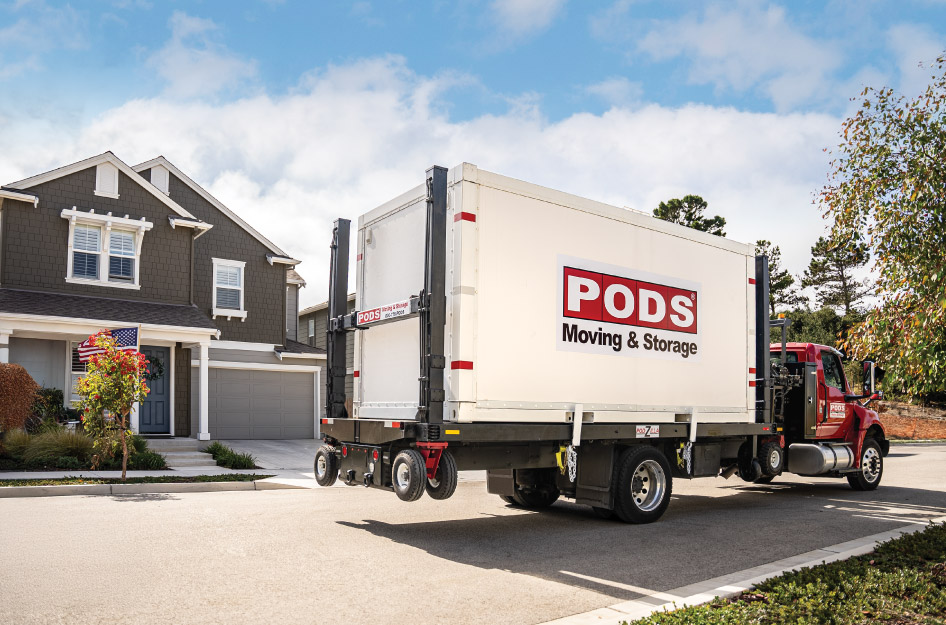How Much Does a Storage Container Cost? PODS Storage Costs vs. Storage Unit Costs
Moving and Storage Container Guides
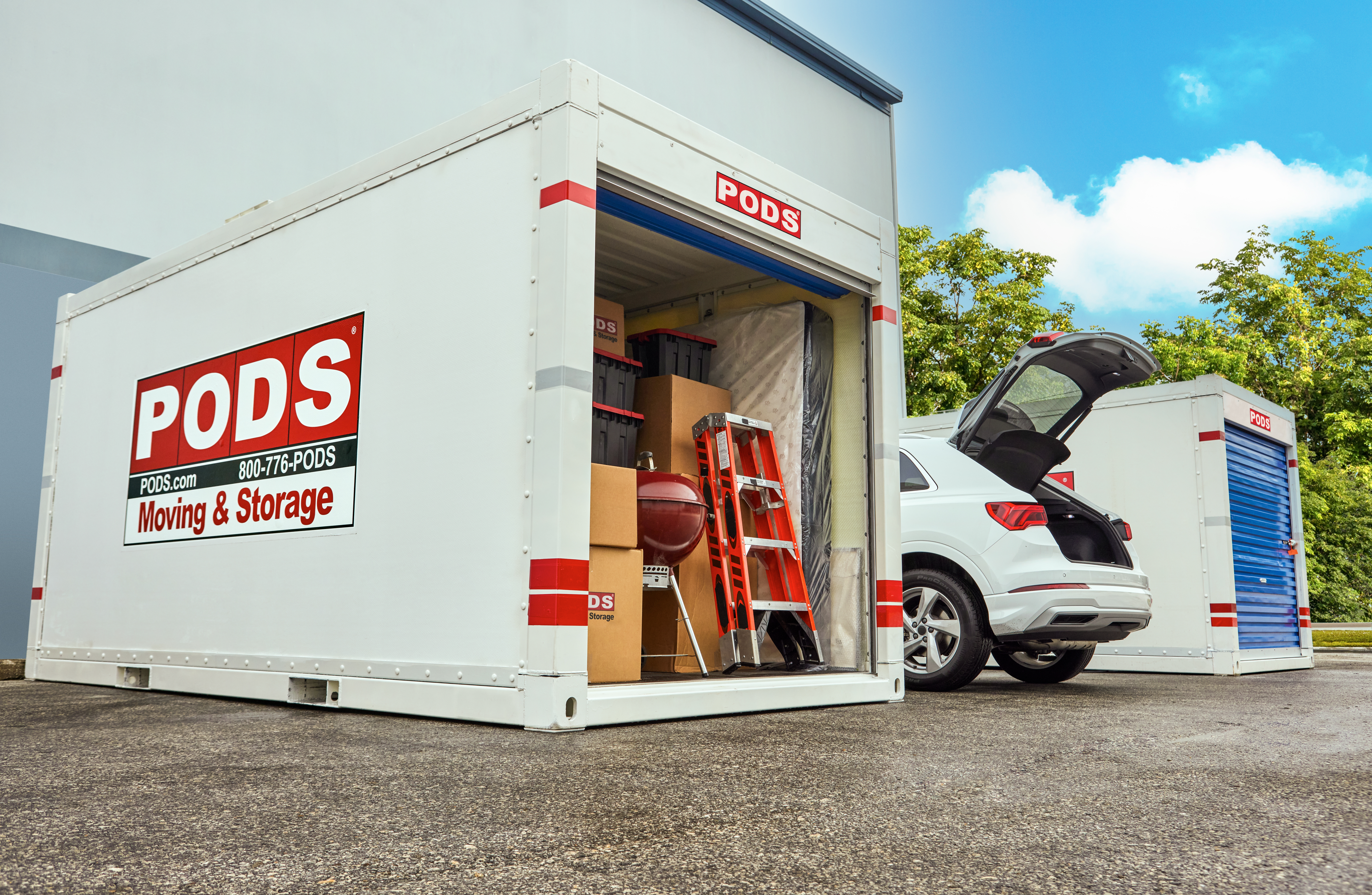
Stuff. We all have it. But we don’t always have enough room for it. That’s why we have storage. But we’re not talking about your parents' garage here. Whether you’re shelving your extra appliances because you’re moving in with your partner, storing furniture during home remodeling, or just keeping that collection of avant-garde jazz vinyl in a safe place, you’re going to have to pay for it. But how much does a storage container cost? How much does PODS storage cost? And what are the average storage unit costs?
To make sure you’re paying the right price for the storage you need, read on. We’ll help you figure it all out — from PODS rental costs to typical storage unit costs and more.
| Visit PODS online to get a personalized quote of your PODS storage costs. |
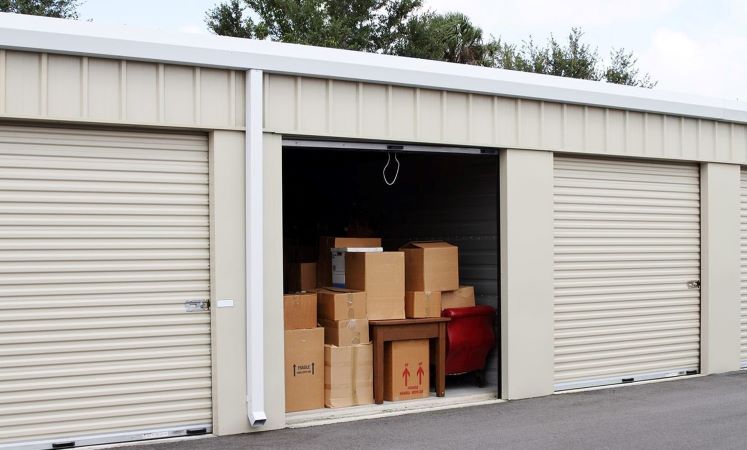
In both drive-up and indoor self-storage units, pricing is based on the size of the space, the location, and the duration of your rental — but doesn't include the cost of renting a moving truck, gas, and other expenses.
Storage Unit Costs — FAQs
Q: Is it cheaper to rent a PODS container or a storage unit?
A: At first glance, the PODS storage cost may seem higher than traditional storage unit costs, as monthly PODS container rentals average $139–$239, and a standard storage unit costs an average of $60–$180 per month. But when you break down the costs of each, it’s clear that a PODS storage container is an economical choice. With PODS, you avoid hiring full-service movers and their sometimes prohibitive prices. And if you pick the DIY route, you’ll need to rent a truck, haul your belongings to a self-storage unit, and then rent another truck when it’s time to move your stuff out of storage. PODS containers provide flexibility and convenience, not to mention you don’t have to handle the hassle of driving a huge truck.
Q: How much is a 16-ft PODS container for moving?
A: The exact cost of moving with a 16-ft PODS container will vary depending on the details of your move. You can get a local moving quote online or call 877-350-7637 for long-distance moving.
Q: How many PODS containers do I need for a 2,000 square foot house?
A: You would need two 16-foot containers for a 2,000 square foot house. This is the largest of three container sizes offered by PODS, and the most popular. Each 16-ft container can accommodate a two-bedroom home or a space up to 1,200 square feet.
Q: Is a 10x10 storage unit enough?
A: A 10x10 storage unit is usually enough for three rooms — a living room and two bedrooms, for example — and is comparable to a 12-foot PODS moving and storage container.
Q: What can you put in a 5x5 storage unit?
A: A 5x5 storage unit is enough for a large closet or small room — think extra space for shoes, dresses, suitcases, lamps, and other odds and ends.
Q: How much fits in a 10x20 storage unit?
A: 10x20 storage containers can generally fit about five rooms’ worth of stuff. You have 200 square feet of floor space to work with, so it’s certainly big enough for your king bed, sectional sofa, and large appliances.
Q: Does PODS offer climate-controlled storage?
A: PODS doesn’t offer climate-controlled storage, which means that PODS containers and storage centers are not temperature- or humidity-controlled. However, if you are storing items that are not heat- or humidity-sensitive, you can rest assured that PODS steel-frame storage containers are weather-resistant and are designed to protect your items from the elements.
Types of Storage
Before we really start talking dollars and cents, let’s go over the two main types of storage.
Self-Storage
Self-storage is probably what you picture when you think of a classic “storage unit.”
Self-storage facilities come in two main styles: There are outdoor, drive-up units arranged in a row, and there are large buildings with many indoor units that are sometimes climate-controlled.
In both kinds of facilities, you have to take your stuff to the location and load it into storage yourself.
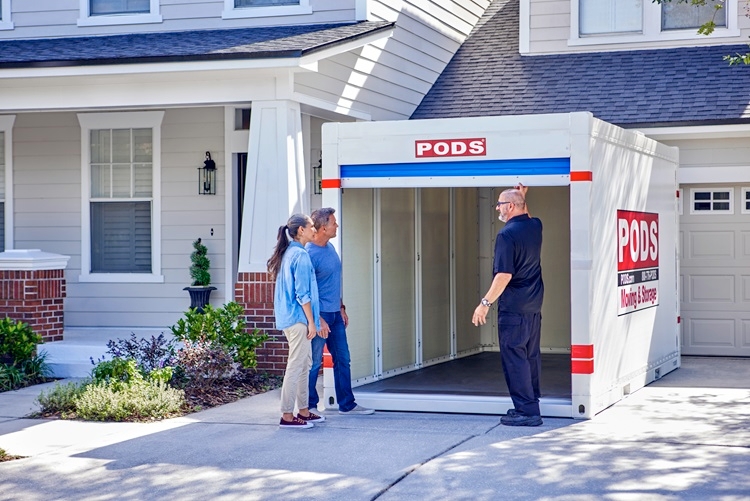
PODS portable storage containers provide the convenience and flexibility to pack and load on your own schedule.
Portable Storage
Portable storage companies, like PODS, drop off a storage container at your home for convenient loading in your driveway.Once the container is loaded, you can keep it at your house for convenient 24-hour access, have it taken to a secure storage facility, delivered to a new location, or a combination of the two.
Now let’s take a closer look at the costs associated with these two types of storage.
Average Storage Units Costs
Have you ever gone out to eat with a bunch of friends and picked up the tab? If so, you probably realize that a few $10 dishes can start to add up really fast when you calculate the drinks, sides, tax, and tip. Determining storage unit pricing and adding up your self-storage unit costs can be a similar process.
The base storage unit costs vary by size, but they’re generally pretty reasonable. Okay, so how much do different storage units cost? Keeping in mind that rates can vary significantly depending on your city and the season when you start storing, here’s a look at the average storage unit costs for the most popular-sized units.
Average Self-Storage Unit Costs
Size: Small
- Approximate Dimensions: 5’x5’ to 5'x10'
- Estimated Monthly Cost: $50–130 per month
Size: Medium
- Approximate Dimensions: 10'x10', 10’x15’
- Estimated Monthly Cost: $130–250 per month
Size: Large
- Approximate Dimensions: 10’×20’, 10’×25’, 10’×30’
- Estimated Monthly Cost: $225–500 per month
But storage unit costs can add up quickly, between renting a truck, filling up the gas tank, and renting or buying a moving cart to bring your stuff to and from the unit. That’s another $100, easily, plus some not-so-fun truck driving. Your storage costs will also increase if you opt for climate control, extra security, expensive locks, or insurance.
That’s the rundown for self-storage unit costs. But how much is PODS storage after the container is delivered to your door? Here’s a look at the PODS storage cost per month.
| Not sure how much storage space you want? Our storage unit size guide will help you figure out just how much square footage you need. |
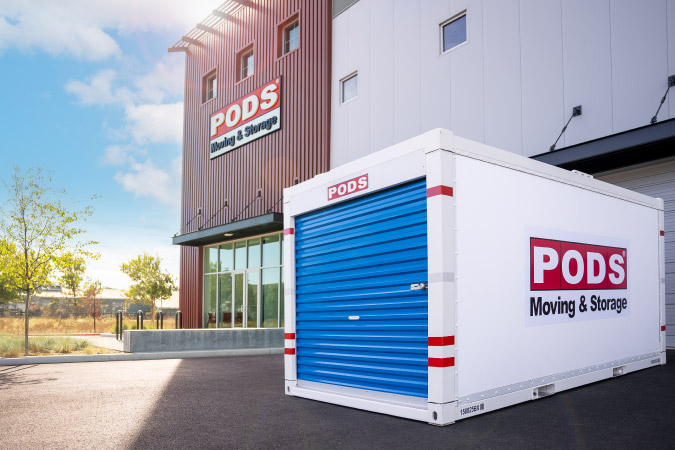
How much does a storage container cost? PODS monthly container rentals average $139–$239, but prices vary depending on the size of the container, location, and time of year.
PODS Storage Costs
If you’re not too keen on the idea of driving a rental truck with all your stuff to a storage facility, then you can get a storage container delivered right to your door. It’s kind of like ordering a pizza, but the box is a lot bigger. But how much does a storage container cost?
Just like with self-storage, PODS storage cost per month can vary quite a bit based on the container size, your location, and the season.
For a personalized storage quote, visit PODS online or call 855-706-4758. But for a general look at PODS storage costs, check out the info below.
Average PODS Storage Costs*
Monthly Container Rental for 8-Foot Container
- On-Site Storage (on your property/in driveway): $139
- PODS Storage Center: $189
Monthly Container Rental for 12-Foot Container**
- On-Site Storage: $159
- PODS Storage Center: $210
Monthly Container Rental for 16-Foot Container
- On-Site Storage: $175
- PODS Storage Center: $239
*Based on an average of PODS standard rates across all U.S. locations. Rates will vary based on your city and the season when you start storing. Delivery and pickup fees average $80 each way. In many cases, delivery and pickup charges can be waived, depending on the duration of your container rental. PODS is constantly upgrading its container fleet, and container sizes may vary slightly from one model to another. **The 12-foot container is available only for local moves and storage.
You can also factor in the extra savings and convenience of having a container delivered to your door: No rental truck fee, no driving to the facility, and no rushing your loading and unloading.
Now that you know the PODS storage costs and traditional storage unit costs, how do you figure out which one is right for you?
Getting the Best Value
While you’re looking for the best deal, it’s important to focus on the storage features that matter most to you. Here are some factors to consider when assessing storage unit costs:
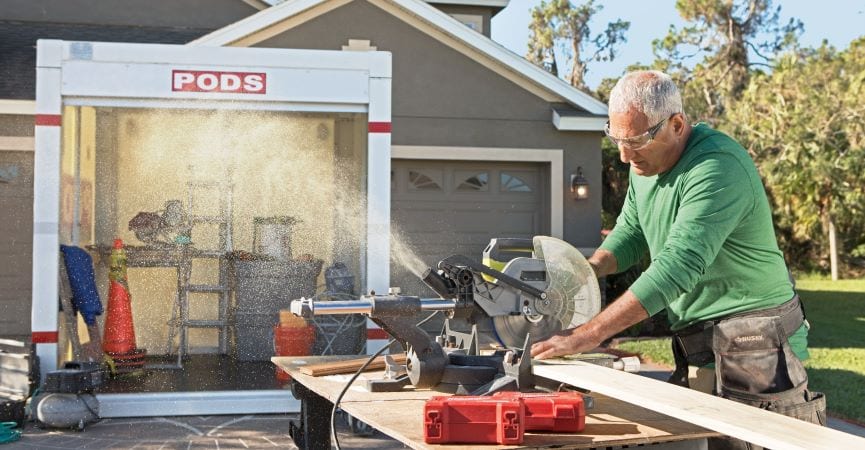
PODS containers are a great option for storage during home-improvement projects, providing a space for rented tools and materials while you’re getting the job done.
Location and Convenience
If you live in a dense urban area, finding enough space for your stuff can feel like a full-time job. In the city, space is at a premium. This also means it can be hard to find a good storage facility. For example, like other living expenses, storage costs will likely be higher in Los Angeles compared to Peoria, Illinois.
This makes the convenience of having a storage container delivered to you hard to beat (as long as there’s space in your driveway or on your property). Your storage costs may be a bit higher than self-storage, but it sure beats driving a huge truck through city traffic.
And while it may be easier to find a good self-storage facility in the suburbs, that doesn’t mean it’s the best option. Portable storage containers can be left in your driveway for a month or longer, allowing you to move things in and out at your leisure. It’s kind of like having an extra garage or spare room in your house.
Time
There’s a big difference between storing stuff for a few weeks and storing it for a few years. Some storage facilities actually require a minimum rental period, like three months. Others will give you a discount for longer terms. Be sure to ask about each company’s policies.
Season
Storage costs tend to be higher from May through September because that’s the busy season for moving, which is a big part of the overall storage market. If you have any flexibility with your own schedule, you can usually save on storage costs if you start storing between October and April.
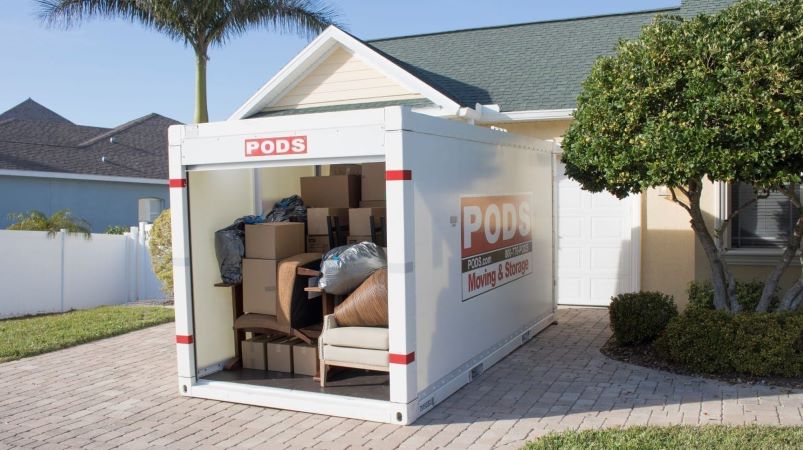
With portable storage units like PODS containers, you only have to load and unload your belongings once, which means less time and effort — and possibly lower costs — compared to DIY and full-service moving.
When Storage Is Part of a Move
If you’re getting storage because you’re moving to a new house, portable containers are a fantastic option. You can shave off a lot of work and money with portable storage because you only have to load and unload your things once. Think about it: You load your stuff into a container at your current residence, have it taken to storage while you work on the moving logistics — or home renovation — and then have it delivered to your new home (or back to your current one). Easy-peasy, lemon-squeezy.
You can even split your stuff into multiple containers: One to go into storage while you replace the old carpeting with new floors, one to go to your daughter’s home with all that stuff she left at your old house, and another with essential items that you need to have delivered immediately.
Protect Your Belongings
Your precious belongings will be safe in a secure facility. But coverage for your belongings is important to consider in the unlikely event of flooding, fire, theft, or other disasters.
If you have homeowners or renters insurance, this may meet the requirement. However, you may want to purchase more coverage based on the value of your belongings. Storage companies offer multiple coverage options. See PODS Contents Protection Coverage options here.
Climate Control
Did you know most people don’t really need strict climate control for their stuff (unless they’re in a super-humid area)? There’s also no firm industry standard definition of what climate control even means. Generally, though, it can be agreed upon that a climate-controlled storage unit should keep temperature levels between 55° and 78° F, with humidity levels not exceeding 55 percent.
| Storing with PODS in Canada? Though not climate-controlled, PODS storage centers in Canada are heated as necessary to maintain an indoor temperature of 59º–68º F (15º–20º C). Thermostats are programmed to automatically heat things up when temperatures drop below this range. |
PODS doesn’t offer climate-controlled storage. However, you can rest assured that PODS’ indoor storage facilities are secure and the steel-frame containers are designed to protect your items from the elements.
Most things will be safe and sound in these conditions, but heat- or humidity-sensitive items should probably be stored in a climate-controlled environment. Sensitive items includes:
- Fine art
- Antiques
- Vintage fabrics
- Vinyl records
- Books
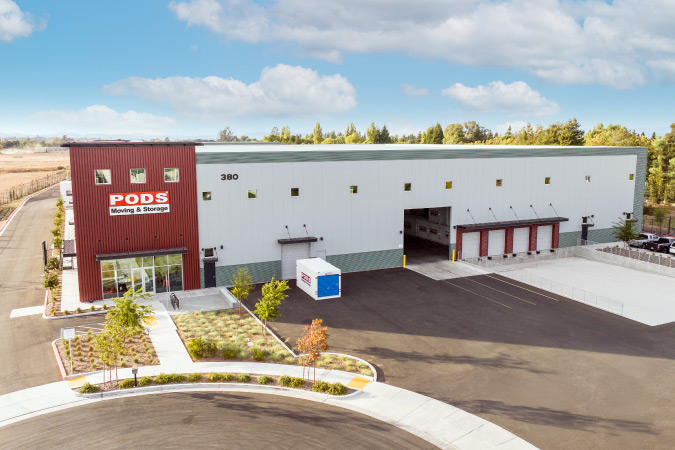
Be sure to choose a storage center that utilizes adequate security measures to keep your items safe and secure.
Security
It’s important to put a good lock on your storage unit or container. But the security shouldn’t end there. Be sure to ask what kind of gates, alarms, and video security systems each storage center has in place (before deciding where to store your belongings).Service
Finally, you’ll want to consider service. The last thing you want to deal with when you’re trying to take care of your valuable possessions is a grumpy employee who seems to enjoy making your life harder. Read online reviews to see what other people have said about each company and, of course, trust your gut!
Choosing the Right Storage Solutions for You
| Looking for more tips? Check out the PODS Blog for all things moving and storage! |
Easton Smith works as a freelance writer and researcher, reviewing technology trends and the moving industry. He moved all around the continent, from New York to California, before landing back in his hometown of Salt Lake City.

Your quote in 60 seconds
Get pricing tailored to your needs!
